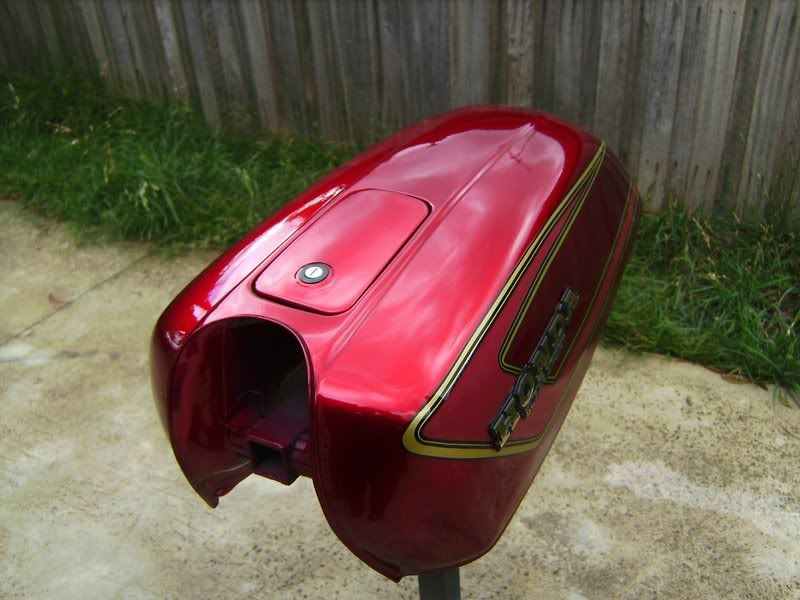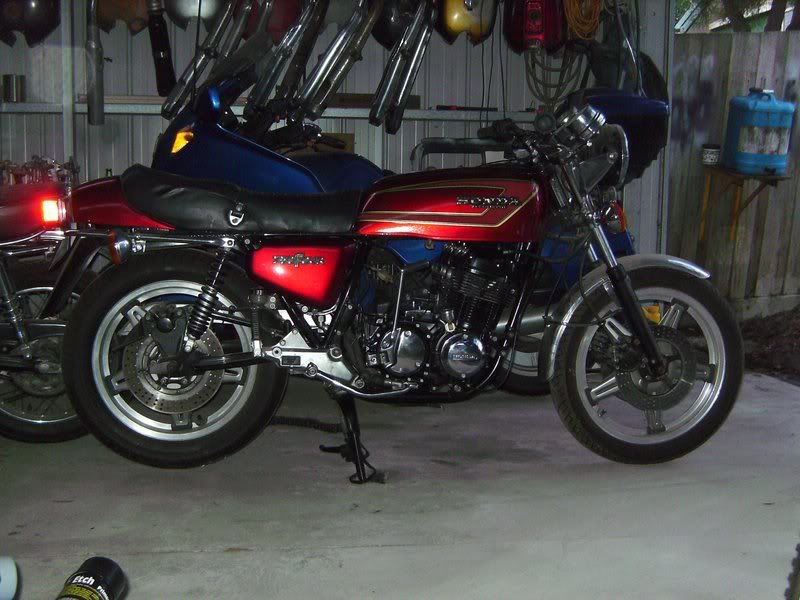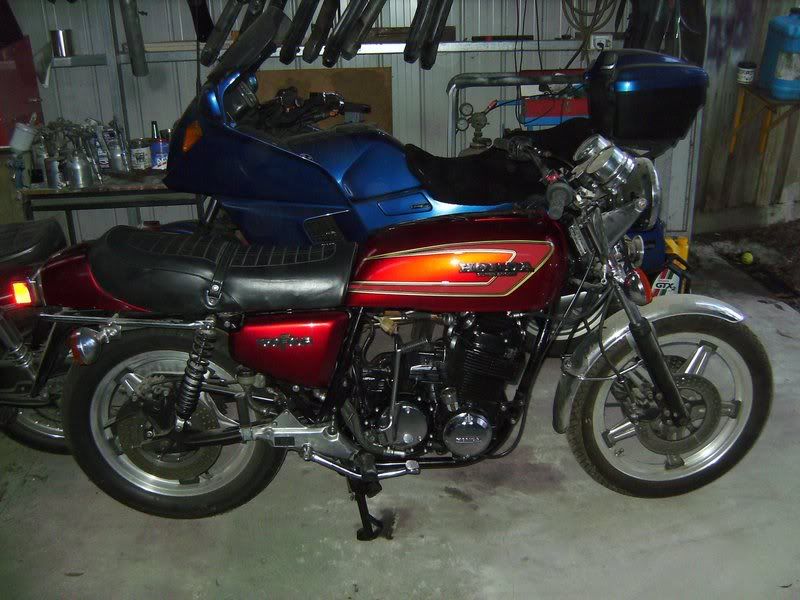Terry has posted this in the "Tricks & Tips" section but I think that it's worthy of a place in the FAQs. I've copied it verbatim...
Terry said:
Okey Dokey, the engine is back together and just needs shoving back into the frame, so time for the tank. When I restored this bike in 04/05, I bought a tank from a guy in New York, but sadly it was full of rust, and within a year of painting it, I got the dreaded bubbles in my shiny candy maroon paint.
Luckily for me there are some great guys here on this site, and Tim Kasper from Texas (KGhost) sent me a rust free black F3 tank with tired OEM paint, but no damage.
Today I got stuck in, and using a nylon 3M "strip disc" on my 7 inch sander/polisher, I stripped all the paint and decals etc off the tank.
The beauty of the nylon disc is that it only takes paint off, not metal. Never, never, never, use an abrasive sanding disc on a tank, that metal is thin, and it's gotta hold fuel, and protect you from exploding in a "get off".
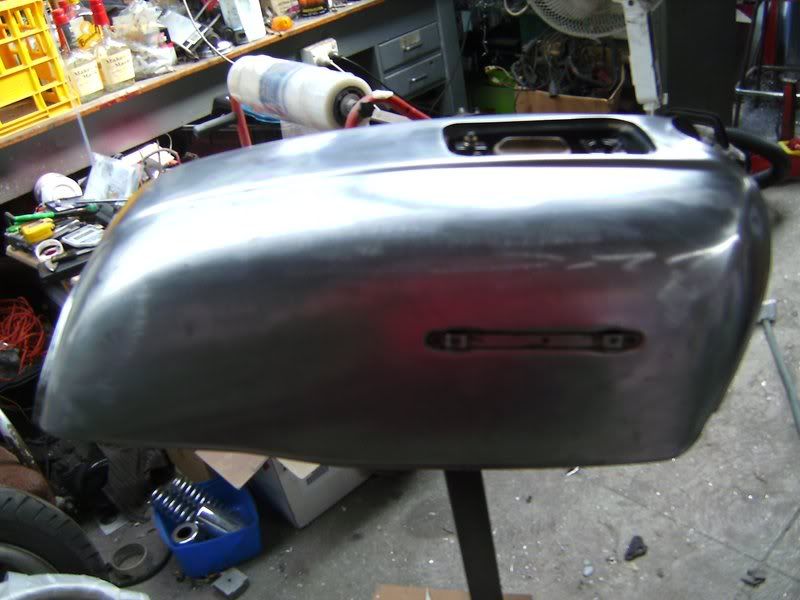
There was one tiny ding on the front right of the tank, so I layed a little bondo.
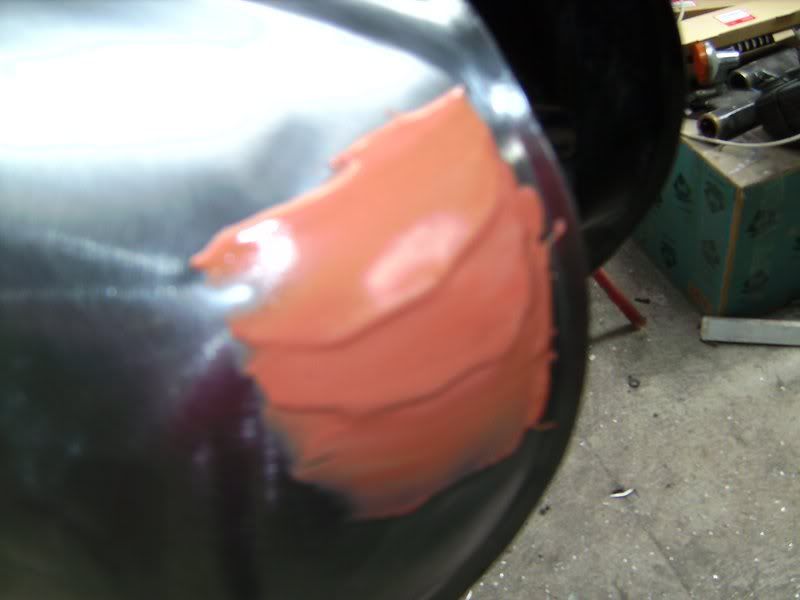
I removed most of the excess bondo when it was in it's "plastic" state with a "surform file", then used a speed file (coarse sanding paper on a board) to knock it down, then some 280 grit dry paper (never ever wet sand bondo, or it'll absorb it then bubble it back thru your paint later when it gets warm) to smooth it out. I also masked off the cap and the tank flap hinge screw threads in anticipation of some paint!
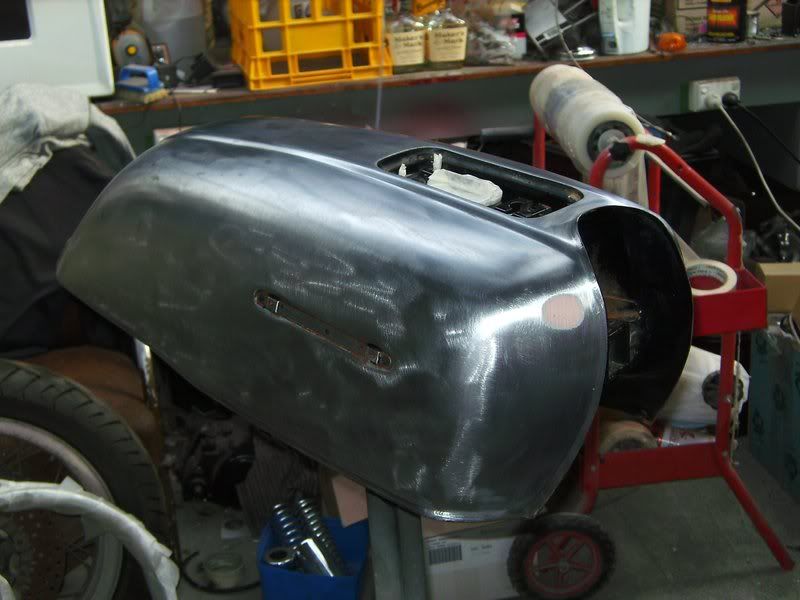
I cleaned the bare metal with some "prep wash" solvent, wiped it all off, "tack ragged" it to remove any dust or lint, and sprayed some "Etch primer" on the bare steel to protect the bare metal from flash rusting, and to provide a chemical "key" to bond the primer/surfacer (next step) to the metal.
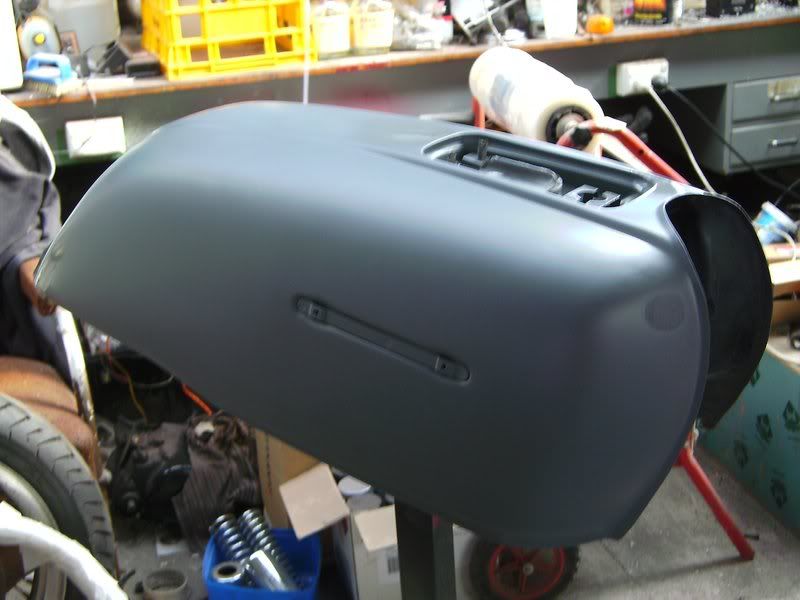
Once the etch primer had a couple of hours to dry @ 20 deg C (about 60 deg F today, it was a tad cool) I sprayed on a couple of coats of primer/surfacer.
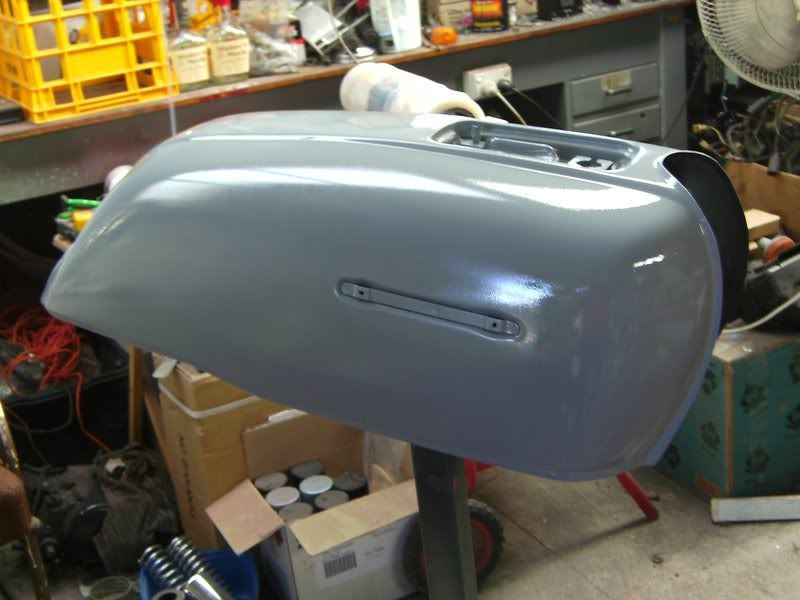
Now as everyone here probably knows, the "top coat" is always a direct result of the prep work you do before the shiny stuff goes on, so to get a really nice finish, at this stage I "fogged" a contrasting color (black) over the primer/surfacer, then let it dry overnight.
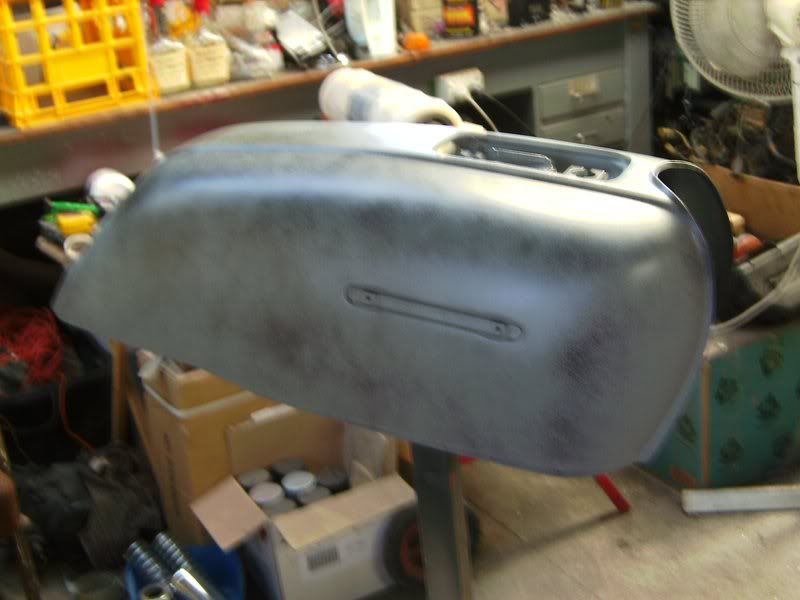
Tomorrow I will "wet rub" the primer/surfacer with 600 grit, and any high or low spots will be easy to find, as they'll either be bare metal (high spot) or black. (low spot) Not much you can do about a high spot apart from shrinking or tapping it down, but I don't anticipate having any, so more likely I'll have some tiny dings that I can fix with "spray putty". (next step)
Sadly I won't get a great deal more done this weekend as I'm going away to visit my folks in the country, but I'll do as much as I can as quickly as I can, without cutting corners. Cheers, Terry.

Well before I left home for the Easter long weekend I got some more done, I rubbed the primer back with some 600 grit wet and dry paper with a little dishwashing detergent which works well as a "wetting agent" and also helps wash the paint sludge away. You can see why I fogged on that "guide coat" more clearly now, any minor imperfection becomes evident as a black mark, contrasting against the grey primer. Using a soft sanding block, you just keep rubbing it back until the black has disappeared, and you can be reasonably sure that you've got a nice flat surface.
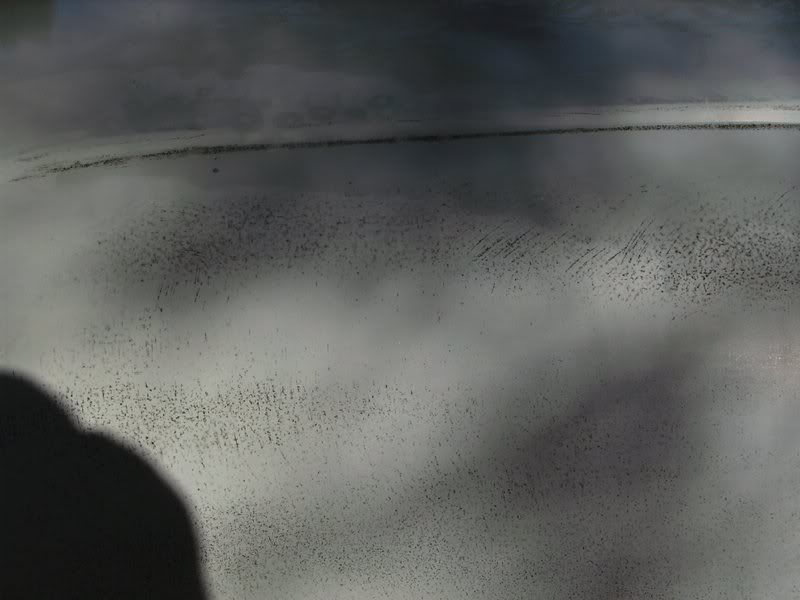
When I got around to the little dint, I could see that it'd need a bit more work.
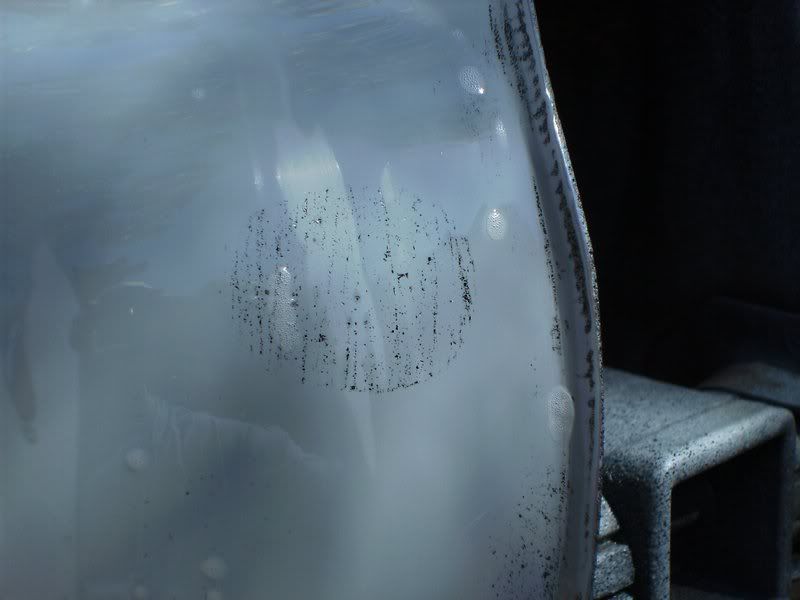
I sprayed a little "spray putty", which is pretty much just a thicker, denser spray primer, to clean up the repair around the ding.
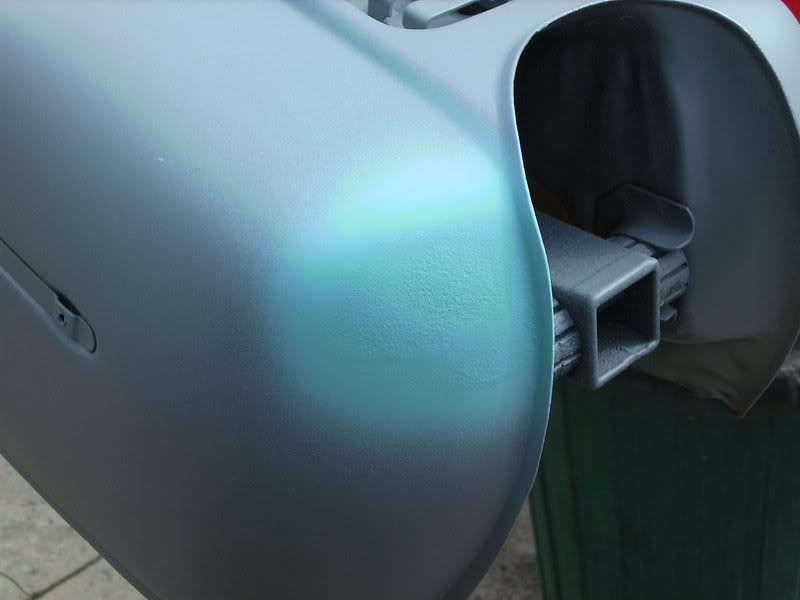
Once the putty was dry (I baked it in my drying cabinet) I rubbed it back, then hit the tank with another complete coat of primer.
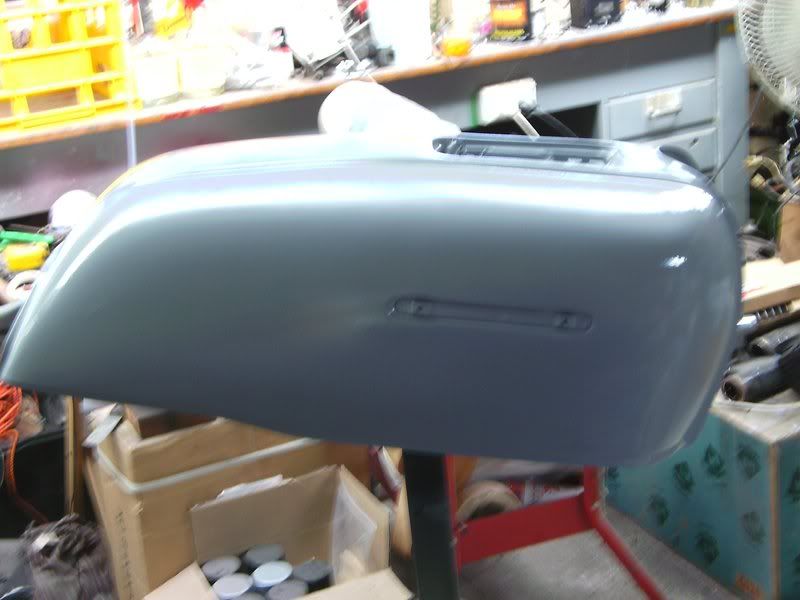
Being a nice warm day, it only took an hour or so to dry, so I rubbed it back again, washed it off with clean water, used a combination of towels and compressed air to dry the tank completely, and hit it with the silver base coat.
This is the stuff that sparkles thru the translucent color coat, so you have to get it right first time, if you get a run and you need to rub it out, then you'll need to re-coat the area again, so it's best to spray on light coats, and just build it up slowly.
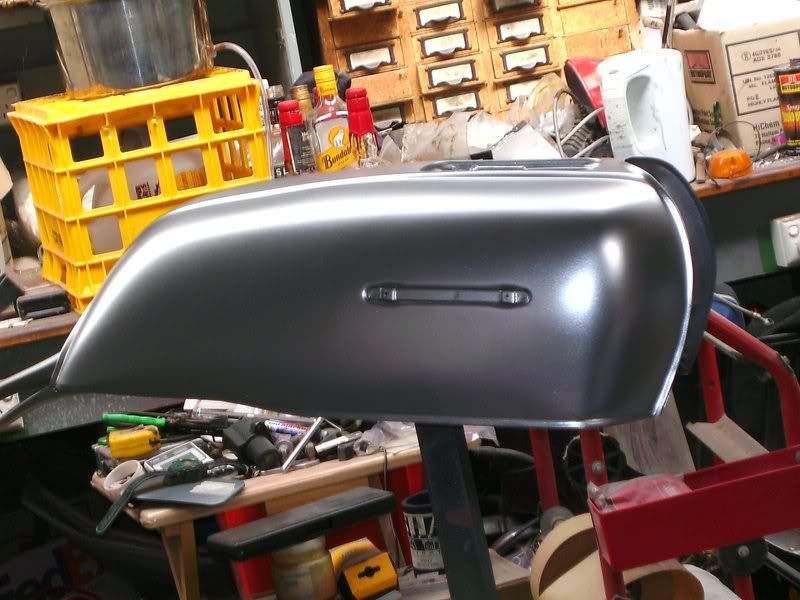
Once again, it was nice and warm (about 80 deg F) when I was doing all this, and so after an hour or so I was able to hit it with the translucent "Candy Apple Red" color. Sorry about the "flare", but this paint is so bright, it's really hard to get around it.
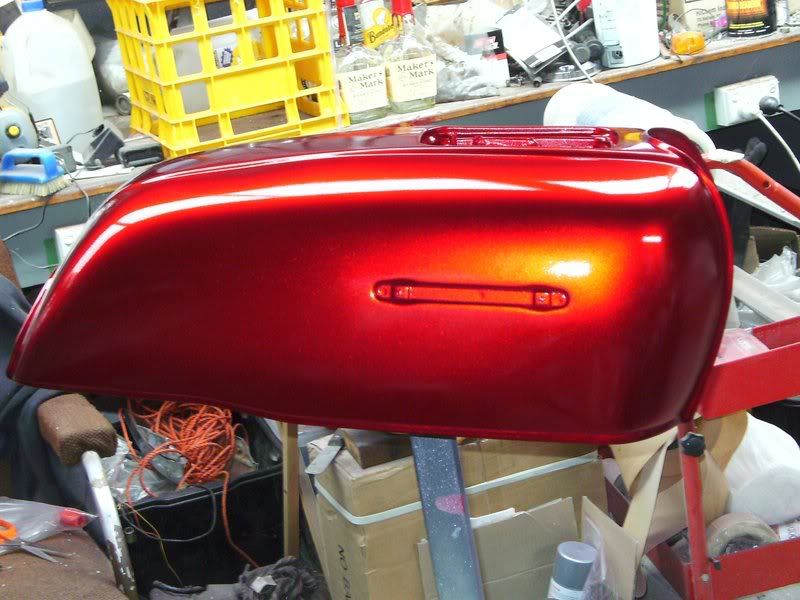
I gave it a few coats of clear laquer to protect the candy red earlier in the week, then yesterday my stripe kit arrived from "Motographix" here in Oz, so I wet rubbed it back once more with the same old piece of 600 wet and dry to further "flatten" the finish, then when it was clean and dry again, I (with the assistance of my son) applied the decals.
This was real "heart in the mouth" stuff, the decals cost $110.00 with tax and shipping, but apart from that, if I stuffed up the application, I could well have damaged the paint too, meaning I would have defaulted back to stage 1. Luckily I got them on and they look pretty good, with a couple of tiny wrinkles, but otherwise, pretty good.
Now I could have used more clear laquer from the spray can, but sadly the weather has really turned to shiit, it was only 50 degrees today, wet and humid misery, which is death for acrylic laquer. Instead, I dusted off the air compressor and my little touch up gun, and I mixed up some "2 pack" clear, really nasty stuff that will give you cancer quicker than a semi-trailer full of Marlboro's, so a good mask is an absolute minimum.
The benefit of 2 pack, apart from anti-humidity properties, is the ability to lay on a nice thick coating with a minimum of coats. This stuff is essentially a hardened enamel, so it "flows" very well, and covers brilliantly. I squirted on only about 150 mils (about a quarter of a pint) and carefully hung the tank in my drying cabinet (just an old fan forced clothes drying cabinet) for a couple of hours at approx 100 deg F, when I pulled it out again, it was all done, and looking lovely.
All I need to do now is fit my new tank badges and the trap door lid, and once the engine is back in, (tomorrow, hopefully) it'll be right to go! Cheers, Terry.

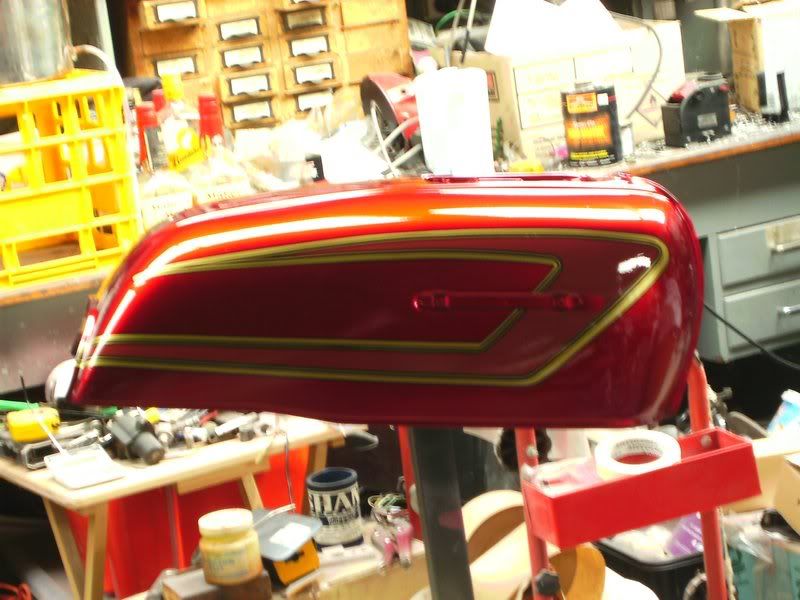
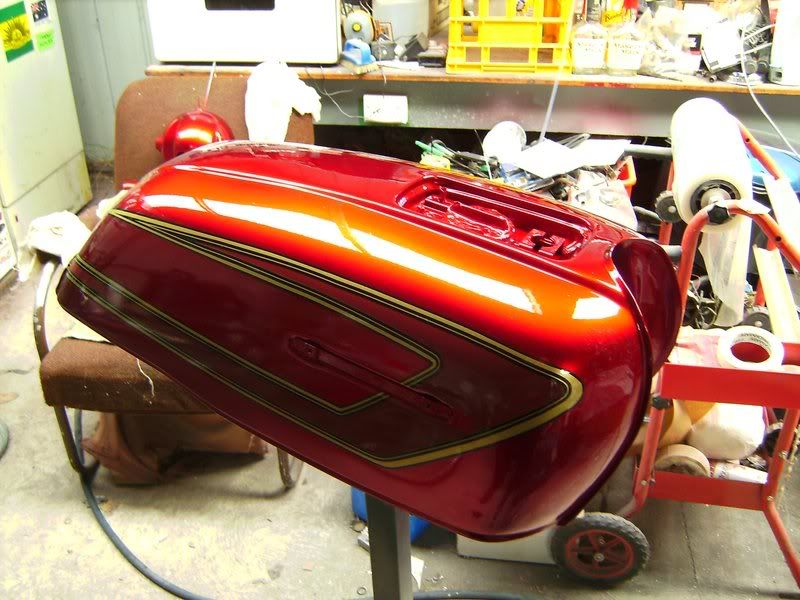
I attached the badges and trap door this morning, then spent the rest of the day re-installing the engine. It's really nice just having the engine back in the frame, and even though there's still a bit of work to do before I can fire it up and tear up some miles, I'm happy that it's looking like a bike again. All going well, next weekend will see it finished and ready for the road! Cheers, Terry.


